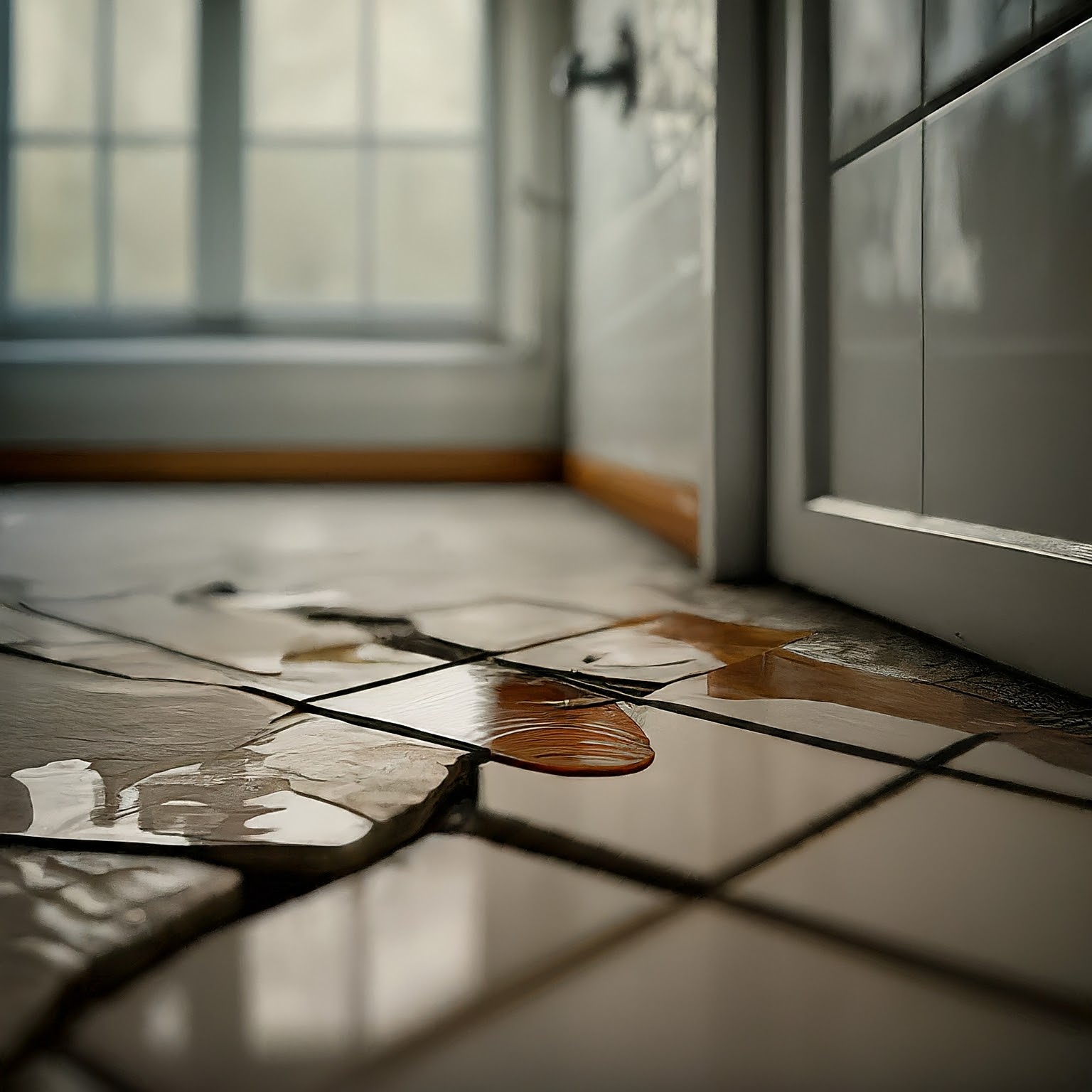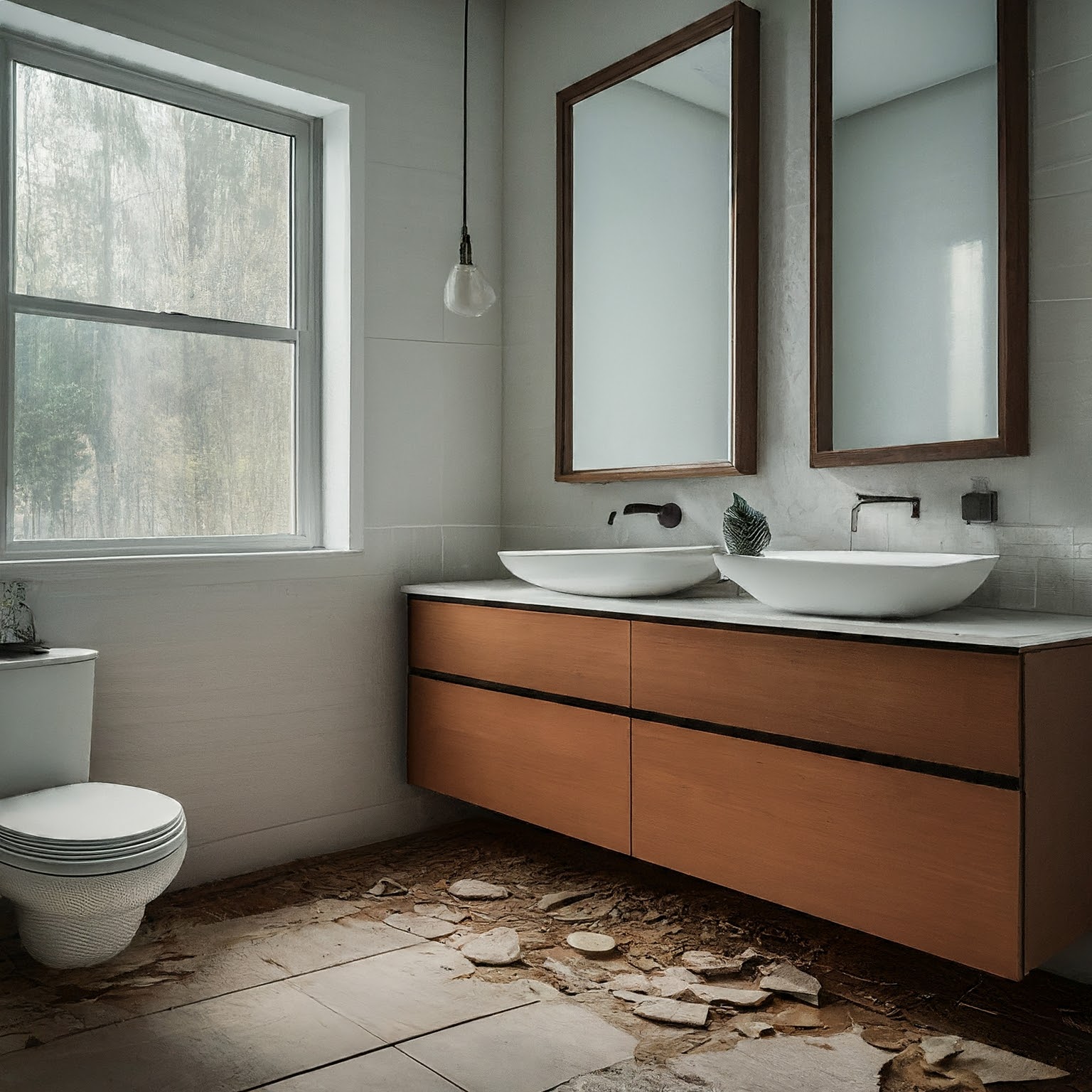Bathroom subfloor repair & replacement costs explained
Repairing or replacing a subfloor can cost $1,000 or more
- Repair or replace the surface below the floor covering
- A subfloor can get damaged by water or age
- Replace joists and bearers for sagging floors
- Incorrect floor preparation can cause water leaks
Nu-Trend is a bathroom renovator in Sydney and licensed plumbers who can find the causes of water leaks, inspect flooring or walls, carry out repairs or do complete bathroom renovations. The cost to repair or replace an existing subfloor will vary from situation to situation.
The cost to repair the water damaged subfloor in the pictures above was around $6,500. This included removal of all the damaged materials, installing new plumbing and then building the new subfloor with joists and bearers.
It is important to note that not every subfloor repair cost will be the same depending on the extent of the damage, size of the room, access etc.
The subfloor is typically a solid material beneath the floor covering that is attached to the floor joists to create the base for the finished flooring, such as carpet, hardwood, laminate or tile to be laid on. The subfloor of a bathroom is the level surface below the floor covering which is nearly always tiles.
By far the most common cause of subfloor damage is moisture. Common sources are cracked plumbing fixtures, toilet bases, bath tubs or sinks. If the pipes or connecting elements are not installed correctly or fail, then water can leak beneath the floor tiles into the actual subfloor directly.
Over time if the subfloor is exposed to moisture it can compromise its integrity which can cause excessive flaking, warping, or even mould. In the most extreme cases the subfloor will fail and you will notice tiles cracking or even movement in the floor when you walk on it.
How do you know your subfloor is damaged or worn?
1. Your floors are uneven or sunken in parts.
If you notice a soft spot under carpet or wood flooring, it could mean that the panels below have weakened. While replacing the entire subfloor may not be necessary, you will have to replace the damaged pieces to prevent the rot from spreading to a larger area.
2. Your floorboards squeak – loudly.
Subfloors squeak when the nails connecting them to the joists are pulled loose. As you walk across the floor, the nails move in and out of the wooden joists, causing the awful, familiar sound of creaky floorboards. If you notice squeaking throughout the entire room, this could be a sign that the material has warped.
3. The room smells musty or stale.
The smell of mould or mildew is a huge sign of water damage, but the tricky part is finding where. If your carpet or wood floor smells musty, you almost certainly are dealing with a water damaged subfloor. Moisture is the most common cause of failed subfloors and a plumber in Sydney can help you locate the source of any potential leak or water build up.
4. Your floors shift or bounce when you walk on them.
If the floor begins to feel spongy, springy or bouncy, or if you notice the floorboards around you shifting when you walk on them, it could mean that it’s time to replace the subfloor.
5. Your toilet is rocking or loose.
If you notice your toilet moves it could mean the subfloor has become so decayed that it no longer securely anchors the fasteners that hold the toilet to the floor,. It could even be from a slow leak in your toilet’s plumbing.
6. Your floor tiles are cracking.
Tiles are rigid and need a firm, solid surface. If you start to see cracks it can mean that everything below them is beginning to move and can’t hold it up.
What does a damaged subfloor in a bathroom look like?

The most obvious visual sign of a damaged subfloor will be low spots or sinking sections in your bathroom. These low spots or sections of flooring that you can see or feel like they are sinking is a common sign that the subfloor has been exposed to water. Other visual indicators can include;
- Uneven tiles: Tiles may appear wobbly, loose, or tilted, indicating underlying instability in the subfloor.
- Cracked tiles: Cracks in tiles, especially near fixtures like the vanity, toilet, or shower, can point to movement or damage in the subfloor below.
- Visible gaps: Larger gaps between tiles can signify warping or shifting of the subfloor.
- Exposed subfloor: In severe cases, you might see patches of the subfloor material itself exposed through broken tiles or gaps. This can reveal issues like rotted wood, warped plywood, or cracked concrete.
- Water stains: Discoloured areas or water stains spreading from corners, fixtures, or around the base of the toilet can indicate leaks that have damaged the subfloor.
- Mould growth: Dark, fuzzy patches on the exposed subfloor or areas with a musty smell might signify mould growth due to moisture issues.
What contractors can diagnose and repair a damaged subfloor in a bathroom?

There are different subfloor repair contractors in Sydney that can diagnose and repair potential subfloor issues in your bathroom including;
1. Licensed builders: Licensed builders have the expertise and qualifications to handle complex bathroom renovations, including subfloor repairs and underpinning (if necessary). They can work with architects and engineers for more intricate projects.
2. Bathroom renovators: Many specialist bathroom renovation companies like Nu Trend in Sydney have experience diagnosing and repairing subfloor issues. They are familiar with common problems and likely solutions in older properties or specific building styles prevalent in Sydney.
3. Waterproofing specialists: Water damage is a leading cause of subfloor problems in bathrooms. Waterproofing specialists can assess the source of leaks and repair any damaged waterproofing membranes before addressing the subfloor itself.
4. Building surveyors: These qualified professionals can inspect your bathroom, diagnose the type of subfloor and potential issues, and advise on appropriate repairs or recommend further consultations with structural engineers.
5. Structural engineers: For cases involving severe structural damage or extensive subfloor replacement, a structural engineer can provide expert advice and design solutions to ensure the structural integrity of your bathroom and surrounding areas.
To find the right professional:
- Check qualifications and licenses: Ensure they are licensed builders or hold relevant certifications for specific repairs like waterproofing.
- Experience in bathroom renovations: Look for someone with experience handling subfloor issues in bathrooms specifically.
- Get multiple quotes and references: Compare quotes and check references from previous clients to assess their workmanship and customer service.
- Clear communication: Discuss your problem in detail and ensure they understand the scope of work and potential solutions.
- Warranties and guarantees: Ask about warranties offered on their work to ensure peace of mind.
Additional resources:
- Master Builders Association (MBA) NSW
- Housing Industry Association (HIA) NSW
Remember, addressing subfloor issues promptly is crucial to avoid further damage and costly repairs. By choosing a qualified and experienced professional, you can ensure your bathroom renovation is not only beautiful but also structurally sound and safe.
What factors contribute to the cost of getting a subfloor repaired?
As we explained a moment ago the cost to repair the subfloor in the bathroom pictured above was over $6,000 but many different factors contribute to this including;
1. Size and complexity of the bathroom: Larger bathrooms naturally require more materials and labor, vs smaller ones thust leading to higher costs. Complex layouts with multiple angles can also add complexity and time, impacting the quote.
2. Subfloor material: Different materials have varying costs. A subfloor might need new timber bearers, joists as well as new yellow tongue sheeting, new screed and waterproofing.
3. Existing subfloor condition: If the existing subfloor is severely damaged or requires extensive removal, additional labor and materials might be needed, raising the cost. Conversely, a salvageable subfloor requiring only minor repairs could lead to lower quotes where the work will be done to a section only.
4. Accessibility and ease of removal: If the subfloor is easily accessible and removable (e.g., ground floor bathroom), the project will be simpler and cheaper than bathrooms with limited access or requiring more dismantling (e.g. second storey bathrooms).
5. Disposal of old subfloor: Depending on the material and size, disposal fees can vary. Some companies may include disposal in their quotes, while others might charge extra.
6. Labor costs: Different contractors have varying labor rates, impacting the overall quote. Consider experience, qualifications, and references when comparing quotes.
7. Additional services: Some quotes may include extras like waterproofing membrane installation, which adds to the cost. New plumbing might be needed, pipes relocated etc. So ensure you understand what’s included in each quote for an accurate comparison.
8. Permits and inspections: Depending on the extent of the renovation, permits and inspections might be required, adding to the overall cost. Check with your local council for regulations.




